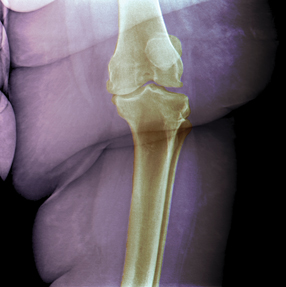Toward a patient- and family-centered practice
A physician in the process of transforming his practice into a medical home discovered a resource that was already at his fingertips: patients and families who could help apply patient- and family-centered care concepts to primary care.
This column is the second in our series “The Patient's Voice,” developed with the National Partnership for Women & Families. The next column in the series will discuss the events described here from the patient's perspective.
I am a pediatrician at a multispecialty clinic in Minnesota. Like many of my peers, including my colleagues in internal medicine, I found that the 15% to 20% of my patients with the most complex conditions took about 80% of my time. I love my work, but I was frustrated because I couldn't spend more time with patients and effective communication was difficult. I saw resources being wasted, and patients and their caregivers suffered needlessly. The best of intentions didn't translate into a practice that worked as well as it could for patients, clinicians, payers—or anyone else. Although I am a pediatrician, I believe that the lessons I have learned and will recount are equally applicable to internal medicine specialists and subspecialists.

Nearly a decade ago, I received a letter from the Minnesota Department of Health. It described a medical home program the department was designing to serve children with complex health care needs. I thought the program would take more time than I had, so I didn't call. Instead, I carried the letter in my work bag for nearly three years. Finally, I picked up the phone and called, and my practice, my patients' experience and my professional life have improved.
In the process of transforming our practice into a medical home, we discovered a resource that was already at our fingertips: patients and families who could help us apply patient- and family-centered care concepts to primary care. We also turned to experts, like those at the Institute for Patient- and Family-Centered Care (where I eventually worked as faculty from 2010 through 2012). Even with all that help, it wasn't simple or easy. We struggled to find the time and funding to do what we needed to do. But by taking a series of baby steps, we have been able to help our patients and their families.
I am convinced that success on this work began with engagement and communication. We had to hear what was and was not working for families of our patients. We had to invite them into conversations and make sure we could really hear what they had to say.
Some of our patients drive more than 100 miles to share their experiences and serve as advisors. Still others serve as community educators and share personal stories to illustrate how patient- and family-centered care works. We also have families who serve as mentors to other families facing difficult medical conditions. They all have become partners who share their experiences to improve our health care organization for everybody. In doing that, they help us cut waste and duplication and better use the system's resources.
We learned quickly that families needed direct access, so we set up a direct phone line to give our most complex patients immediate access to their care coordinators. Here is an example of what wasn't working: The mother of a child who had a recent liver transplant called one evening with a question. The nurse on duty told her to take the child to the emergency department, which was precisely what she was trying to avoid. She simply needed advice from a pediatrician, but the nurse did not put her through. But because we were listening and seeking to improve our systems, her experience helped prompt us to expand our direct phone line so families in our medical home program could reach the pediatrician without delay. We find that when we provide information quickly, many trips to the hospital—and the attendant fear, disruption and cost—are avoided.
We developed a printed care plan for our medical home patients. It summarizes their active problems, history, surgeries, medications, allergies, and personal and social information. It lists contact information for their care teams, so that the specialists and the primary doctor can communicate more easily. The care plan is created by the primary care doctor, the family and the care coordinator working together. It is continually updated and is key to improving communication, avoiding emergency department visits and hospitalizations, and providing efficient care. Sometimes the simplest things make a huge difference.
Within these plans, we have emergency care plans with information on how to treat seizures, respond to an Addisonian crisis, or treat a urinary tract infection in a child with meningomyelocele. These plans are especially helpful to families of children with complex conditions when they travel and are at risk for ending up in emergency departments, where they can spend hours waiting for care from doctors who may be unfamiliar with their conditions. Now, by typing two sentences into a patient's emergency care plan, I can save a family trauma and save the health system thousands of dollars.
Also, at the suggestion of our patient partners, we created a “Please Room Right Away” card that keeps vulnerable pediatric patients out of waiting rooms where they are exposed to bacteria and viruses that can endanger their lives.
I now see my patients and their families as team members. They bring insights, expertise and experience I don't have. I try to see the world through their eyes. By involving them in decisions, I get their buy-in, which means my recommendations are more often met with positive responses and implemented. I have learned to take people where they are and bend to accommodate the realities of their lives.
In addition to concrete steps like these, we had to learn to promote the new ways we operate to our patients and to measure the impact. That's not what we are trained to do, but it's essential to our success.
We still live in a fee-for-service world and need compensation for providing the care coordination our patients need. But I am dedicated to making it work, to partnering with patients and families to identify solutions, and to continuing to improve my patients' lives. Because in the end, that's the reason most of us went into medicine.




